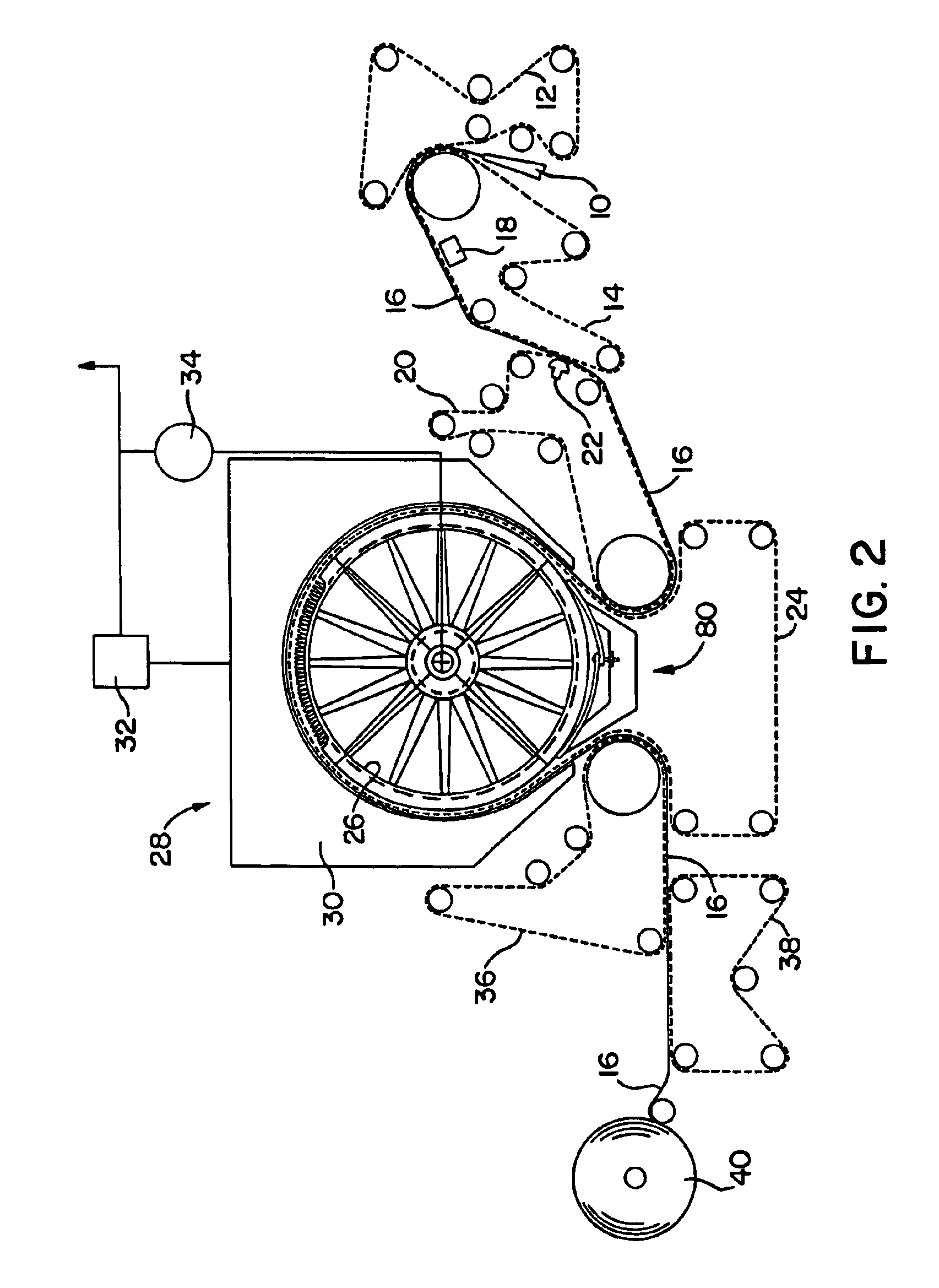Through-air dryer assembly
a technology of through-air dryers and dryers, which is applied in the direction of drying machines, lighting and heating apparatus, and drying machines with progressive movements. it can solve the problems of increasing equipment cost, requiring a substantial amount of labor intensive and critical welding, and being difficult to ship. it reduces the structural demands of the device, is easy to ship, and is easy to calculate load
- Summary
- Abstract
- Description
- Claims
- Application Information
AI Technical Summary
Benefits of technology
Problems solved by technology
Method used
Image
Examples
example 1
One feature of the through-air dryer (“TAD”) design of the present invention is the ability to rapidly calculate loads and deflections analytically using well-established mechanical engineering principles. The purpose of this example is to show analytical methods that may be used to calculate the deflections and loads on support bars for a TAD manufactured using the principles of this invention.
The TAD dryer deck is formed from a multiplicity of individual plates defining a cylinder. Each deck plate comprises a simply supported section bar as shown in FIG. 7.
The bar has an axial length (l), a radial width (w) and a thickness (t). For the purposes of this example the thickness and width is fixed as constant. Designs can be adjusted to vary both thickness and width to optimize the use of materials and enhance the process. For example the width can be varied to be larger at the locations of highest stress, generally in the center of an unsupported span. Likewise the thickness can be va...
example 2
The following is a prophetic example using the equations derived in Example 1. Typical dimensions of a through-air dryer (“TAD”) were used. A typical TAD for the manufacture of tissue paper products is about 5 m (16.4 feet) in diameter, has a width of 5.2 m (17.1 feet). A typical maximum operating speed is 1500 m / min (4921 ft / min) at the surface of the deck. Maximum deflection of 3 millimeters (⅛ inch) is allowed although less is preferable to prevent premature wear or wrinkling of the fabric. For the case of this example, the bars are rectangular in shape although there are advantages to reducing the thickness of the bar at the periphery of the TAD where the bars contact the fabric to prevent non-uniform air flow as previously discussed.
Also, a rectangular bar is not the optimum shape for maximizing the rectangular moment of inertia relative to the weight. A manufactured material consisting of a tube with wearing surfaces would provide more rigidity especially to prevent buckling f...
PUM
 Login to View More
Login to View More Abstract
Description
Claims
Application Information
 Login to View More
Login to View More - R&D
- Intellectual Property
- Life Sciences
- Materials
- Tech Scout
- Unparalleled Data Quality
- Higher Quality Content
- 60% Fewer Hallucinations
Browse by: Latest US Patents, China's latest patents, Technical Efficacy Thesaurus, Application Domain, Technology Topic, Popular Technical Reports.
© 2025 PatSnap. All rights reserved.Legal|Privacy policy|Modern Slavery Act Transparency Statement|Sitemap|About US| Contact US: help@patsnap.com



